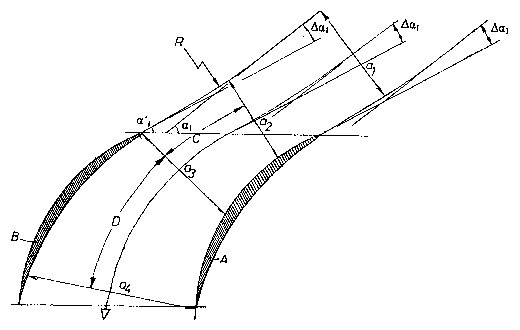Some of the information on this Web page has been provided by external sources. The Government of Canada is not responsible for the accuracy, reliability or currency of the information supplied by external sources. Users wishing to rely upon this information should consult directly with the source of the information. Content provided by external sources is not subject to official languages, privacy and accessibility requirements.
Any discrepancies in the text and image of the Claims and Abstract are due to differing posting times. Text of the Claims and Abstract are posted:
| (12) Patent Application: | (11) CA 2427600 |
|---|---|
| (54) English Title: | AXIAL FLOW TURBO COMPRESSOR |
| (54) French Title: | TURBOCOMPRESSEUR A ECOULEMENT AXIAL |
| Status: | Deemed Abandoned and Beyond the Period of Reinstatement - Pending Response to Notice of Disregarded Communication |
| (51) International Patent Classification (IPC): |
|
|---|---|
| (72) Inventors : |
|
| (73) Owners : |
|
| (71) Applicants : |
|
| (74) Agent: | SMART & BIGGAR LP |
| (74) Associate agent: | |
| (45) Issued: | |
| (86) PCT Filing Date: | 2001-11-02 |
| (87) Open to Public Inspection: | 2002-05-10 |
| Availability of licence: | N/A |
| Dedicated to the Public: | N/A |
| (25) Language of filing: | English |
| Patent Cooperation Treaty (PCT): | Yes |
|---|---|
| (86) PCT Filing Number: | PCT/SE2001/002409 |
| (87) International Publication Number: | WO 2002036965 |
| (85) National Entry: | 2003-05-01 |
| (30) Application Priority Data: | ||||||
|---|---|---|---|---|---|---|
|
An axial flow compressor including one or more axially spaced stator sections
(14) each having a circumferential array of guide vanes (15), and one or more
rotor section (12, 16) each having a circumferential array of rotor blades
(13, 17; A, B), and between successive rotor blades (A, B) there are formed
flow paths and between the stator and rotor sections there are provided axial
gaps (22, 23, 24) of a diverging configuration so as to form in each flow path
a diffusion region (C) which extends from a narrowest cross section (a2) of
the flow path located at a certain distance upstream of the leading edge of a
second rotor blade (B) to a wider cross section (a3) located approximately at
the leading edge of the second rotor blade (B), wherein each flow path has a
transition region (D) of a substantially non-increasing cross sectional area
extending from the wider cross section (a3) to the trailing edges of the rotor
blades (A, B).
L'invention concerne un turbocompresseur à écoulement axial comprenant une ou plusieurs parties stator espacées axialement (14) ayant chacune un réseau circonférentiel d'aubes directrices (15), et une ou plusieurs parties rotor (12, 16) ayant chacune un réseau circonférentiel d'ailettes de rotor (13, 17; A, B). Entre les ailettes de rotor successives (A, B), on trouve des chemins d'écoulement, tandis qu'entre les parties stator et rotor, on trouve des espaces axiaux (22, 23, 24) dont la configuration diverge, de façon à former dans chaque chemin d'écoulement, une zone de diffusion (C) qui s'étend de la section transversale la plus étroite (a¿2?) du chemin d'écoulement situé à une certaine distance en amont du bord d'attaque d'une seconde ailette de rotor (B) à une section transversale plus large (a¿3?) située approximativement sur le bord d'attaque de la seconde ailette de rotor (B), chaque chemin d'écoulement comprenant une zone de transition (D) d'une zone de section transversale n'augmentant sensiblement pas qui s'étend de la section transversale plus large (a¿3?) aux bords arrière des ailettes de rotor (A, B).
Note: Claims are shown in the official language in which they were submitted.
Note: Descriptions are shown in the official language in which they were submitted.

2024-08-01:As part of the Next Generation Patents (NGP) transition, the Canadian Patents Database (CPD) now contains a more detailed Event History, which replicates the Event Log of our new back-office solution.
Please note that "Inactive:" events refers to events no longer in use in our new back-office solution.
For a clearer understanding of the status of the application/patent presented on this page, the site Disclaimer , as well as the definitions for Patent , Event History , Maintenance Fee and Payment History should be consulted.
| Description | Date |
|---|---|
| Application Not Reinstated by Deadline | 2006-11-02 |
| Time Limit for Reversal Expired | 2006-11-02 |
| Inactive: IPC from MCD | 2006-03-12 |
| Inactive: IPC from MCD | 2006-03-12 |
| Deemed Abandoned - Failure to Respond to Maintenance Fee Notice | 2005-11-02 |
| Letter Sent | 2003-12-31 |
| Inactive: Single transfer | 2003-11-27 |
| Inactive: Courtesy letter - Evidence | 2003-07-08 |
| Inactive: Cover page published | 2003-07-07 |
| Inactive: Notice - National entry - No RFE | 2003-07-02 |
| Application Received - PCT | 2003-06-03 |
| National Entry Requirements Determined Compliant | 2003-05-01 |
| Application Published (Open to Public Inspection) | 2002-05-10 |
| Abandonment Date | Reason | Reinstatement Date |
|---|---|---|
| 2005-11-02 |
The last payment was received on 2004-10-08
Note : If the full payment has not been received on or before the date indicated, a further fee may be required which may be one of the following
Please refer to the CIPO Patent Fees web page to see all current fee amounts.
| Fee Type | Anniversary Year | Due Date | Paid Date |
|---|---|---|---|
| Basic national fee - standard | 2003-05-01 | ||
| MF (application, 2nd anniv.) - standard | 02 | 2003-11-03 | 2003-10-22 |
| Registration of a document | 2003-11-27 | ||
| MF (application, 3rd anniv.) - standard | 03 | 2004-11-02 | 2004-10-08 |
Note: Records showing the ownership history in alphabetical order.
| Current Owners on Record |
|---|
| ATLAS COPCO TOOLS AB |
| Past Owners on Record |
|---|
| ROLF ALEXIS JACOBSSON |